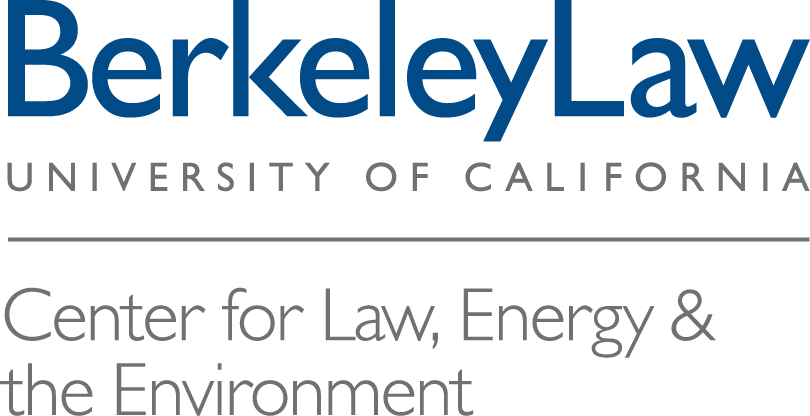Accelerating Lessons Learned from State-Level Climate and Environmental Policies for U.S. Climate Action
Submit a question
In April 2021, the Biden administration announced a new greenhouse gas emissions reduction target for the United States. In the accompanying “nationally determined contribution” submitted to the United Nations Framework Convention on Climate Change, the administration highlighted the interplay between national and subnational policy in driving climate progress. The document promised that federal action will “[build] upon and [benefit] from a long history of leadership on climate ambition and innovation from state, local, and tribal governments.”
A recent event hosted by the Wilson Center’s Environmental Change & Security Program—moderated by Louise Bedsworth, executive director of the University of California, Berkeley’s Center for Law, Energy, and the Environment—brought together three panelists from states at the forefront of climate policy development. They shared their states’ approaches to reducing emissions, promoting clean economic development, and engaging stakeholders of all perspectives—particularly those of historically marginalized communities.
The panelists from Washington, Louisiana, and California agreed that meaningful reductions in emissions and strengthened environmental protections are possible at the state level with careful planning and concerted effort.
For instance, Matthew Botill, chief of the Industrial Strategies Division at the California Air Resources Board, observed that achieving carbon neutrality by 2045, a goal laid out by California’s 2022 Scoping Plan, will not be “not an easy task, but what we’re finding through our planning exercise is that it’s doable…The technology is here. The policies are here. We need to accelerate the implementation of our programs and our infrastructure and our alternative energy sources and our natural working land solutions, but it is achievable.”
The State of the States
While the federal government has taken steps to address climate change—including a slew of executive orders last year—major climate bills have been slow to materialize. But legislative inertia at the federal level has not stopped several U.S. states from setting their own ambitious climate goals.
When the Trump administration withdrew from the Paris Climate Accord, for example, 14 U.S. states and Puerto Rico banded together and created the U.S. Climate Alliance, a bipartisan association of governors committed to meeting their states’ share of the Accord’s emissions reduction aims.
“Persistence is definitely a theme in our state and in our journey,” said Becky Kelley, Senior Policy Advisor for Climate to Washington Governor Jay Inslee. In recent years, her state has undertaken a flurry of measures to shift its economy away from fossil fuels and cut emissions, including the state’s Climate Commitment Act, passed in 2021.
The Act instructs Washington’s Department of Ecology to implement a cap-and-invest program, which sets limits on the volume of emissions that certain enterprises in the industrial and energy sectors can produce. The program will eventually generate an estimated $500 million in revenue. Notably, proceeds from auctions of emissions allowances will be directed to “overburdened communities” facing disproportionate pressures from climate change and environmental degradation.
There is also growing momentum in Louisiana, where a Climate Initiatives Task Force created by its governor submitted the state’s first-ever climate action plan. The initiative set a target of net-zero emissions by 2050 and acknowledges the distinct climate-induced environmental and economic challenges confronting the state.
Harry Vorhoff, deputy director of Louisiana’s Office of Coastal Activities, noted that while his state is relatively new to emissions reduction policy, “Louisiana has long been in the space of climate adaptation planning, with our Coastal Master Plan.” That initiative is a 50-year, $50 billion effort to fund projects that will enhance the ability of Louisiana’s coastal areas to weather storms, restore wetland ecosystems, and sustain economic activity.
The master plan is also iterative, and updated every five years based on fresh analyses and evaluations from a “Planning Tool” that allows state officials to negotiate trade-offs and reprioritize projects. Over the next half-century, it could save the state hundreds of billions of dollars in climate- and weather-related damage.
California—the world’s fifth largest economy—has long been a leader in climate policy development, but its latest scoping plan proposes a more aggressive pace of emissions reductions. “For the first time, we are putting forward a plan that looks at achieving carbon neutrality by no later than 2045,” said Botill. “Previously we had been looking at greenhouse gas reduction cuts, and so our current target in the state is to reduce our emissions 40 percent below 1990 levels by 2030… The science tells us we need to do it.”
Integrating equity considerations
Environmental justice has been the subject of increasing state-level focus, the panelists observed. In its final report, Washington state’s Environmental Justice Task Force stated why it described communities facing particularly acute environmental risks as “overburdened”: “What are the burdens faced by these communities, who is benefiting from the burdens, and why are these particular communities burdened in the first place?”
State legislators appear to have grown increasingly interested in grappling with these issues in recent years. At least 10 states have thus far enacted laws pertaining to environmental justice, with several states slated to consider such legislation.
“There are communities that have borne the brunt of decades of pollution and are bearing the brunt of climate change,” said Botill. “So making sure that your policies, your program, and your implementation [are] bringing benefits back into those communities, changing the course of historical inequity, is very important.”
A growing body of evidence demonstrates that historically marginalized communities will disproportionately bear the worst effects of climate change and unabated emissions. It is a state of affairs rooted in discriminatory policies and practices. For example, a 2021 study published in Nature found that in the overwhelming majority of American cities, people of color live in census tracts that experience more intense heat exposure. Recent research also suggests that formerly redlined neighborhoods experience hotter temperatures today than those that were not.
In light of these burdens, some states have started directing revenue from environmental protection programs to at-risk communities. As noted above, Washington state plans to direct certain proceeds of its cap-and-invest program to overburdened communities. California already has a similar arrangement in place, allocating a portion of revenue generated by its cap-and-trade program to “disadvantaged communities.”
The panelists agreed that collaboration with local communities to ensure their perspectives are heard and incorporated into policymaking and oversight is another essential part of realizing environmental justice. “When we bring [members of overburdened communities] into the decision-making room, we get better outcomes,” said Kelley. “They get better outcomes. The whole state gets better outcomes.”
In 2021, Washington created an Environmental Justice Council to monitor and advise state agencies on their progress. By statute, the body council must represent a wide range of stakeholders, including a youth representative, tribal representatives, labor and business representatives, and an academic expert or practitioner. A number of other states, including Michigan, New Jersey, and Connecticut, have also established advisory councils focused on environmental justice, with similar membership requirements.
Engaging across political perspectives
While political polarization in Washington, D.C. has hindered federal climate action, the panelists concurred in a belief that bipartisan movement at the state level—driven by proactive outreach and an ethos of inclusion—is achievable. A 2022 study in Climatic Change found that between 2015 and 2020, over 400 bills related to decarbonization were passed by state legislatures; one-third of these laws were enacted by state governments under Republican control.
“I think we recognized early on that you know, if we’re going to actually have any action at the end of this planning process, that we need to really bring all perspectives to the table, build that big tent,” said Vorhoff. “Louisiana’s 2017 Coastal Master Plan was passed unanimously by the state legislature, with the resolution for its approval authored by two Republican and one Democratic state senators. According to a 2018 poll, 87 percent of coastal voters support the plan.
Centering the potential for economic development in the clean energy transition can help galvanize public support. “We are looking more and more at this message of reshoring, onshoring manufacturing and building the things that we’re going to need for this transition in our state with good labor provisions and having that vision,” said Kelley. “It crosses the cultural divide, a little bit, to talk about bringing this work home and who’s going to do this work. We want Washingtonians to do this work.”
In its 2021 Clean Jobs America report, the environmental advocacy group E2 observes that the number of clean energy jobs in the United States grew 6 percent between 2018 and 2020, exceeding 3 million. In the state of Washington, the electric power generation sector employs close to 15,000 people, the majority of whom work in solar, wind, and hydroelectric.
While the Covid-19 pandemic created headwinds and job losses for the energy industry, certain energy sectors—like wind generation, battery storage, and electric vehicles—managed to create jobs. The World Economic Forum forecasts that the clean energy transition will create over 10 million jobs around the world, nearly enough to offset expected fossil fuel job losses fourfold.
Despite the scale of the decarbonization challenge, climate change offers an opportunity for state and local governments to overcome partisanship and make headway on several fronts simultaneously—to address historical injustice, improve human health, and spur economic growth.
As Kelley bluntly put it, “Clean energy isn’t a blue thing or a red thing.”
Written by Anuj Krishnamurthy, edited by Richard Byrne.
Continue the conversation on Twitter @NewSecurityBeat. Find related coverage of these issues on our blog, NewSecurityBeat.org.
Introductions

Moderator
Panelists
Hosted By

Environmental Change and Security Program
The Environmental Change and Security Program (ECSP) explores the connections between environmental change, health, and population dynamics and their links to conflict, human insecurity, and foreign policy. Read more


Congressional Relations
The Wilson Center’s office of Congressional Relations works to maintain a vibrant relationship with Members of Congress and their staffs. We organize and run a series of educational programs led by Wilson Center experts, ranging from seminars to private briefings, with the purpose of increasing congressional staffers’ knowledge of foreign policy. We also coordinate outreach to Capitol Hill, including testimonies by Wilson Center scholars and briefings specifically for Members of Congress. Read more


